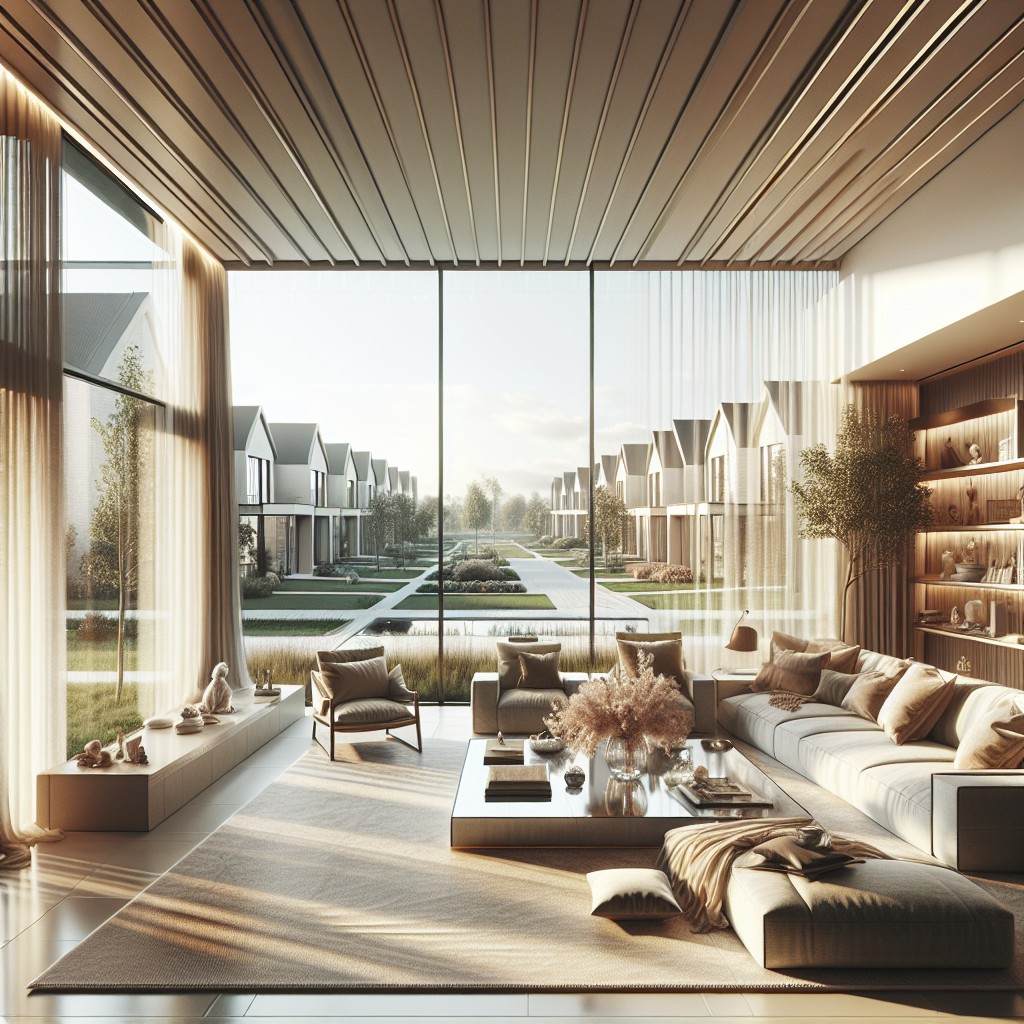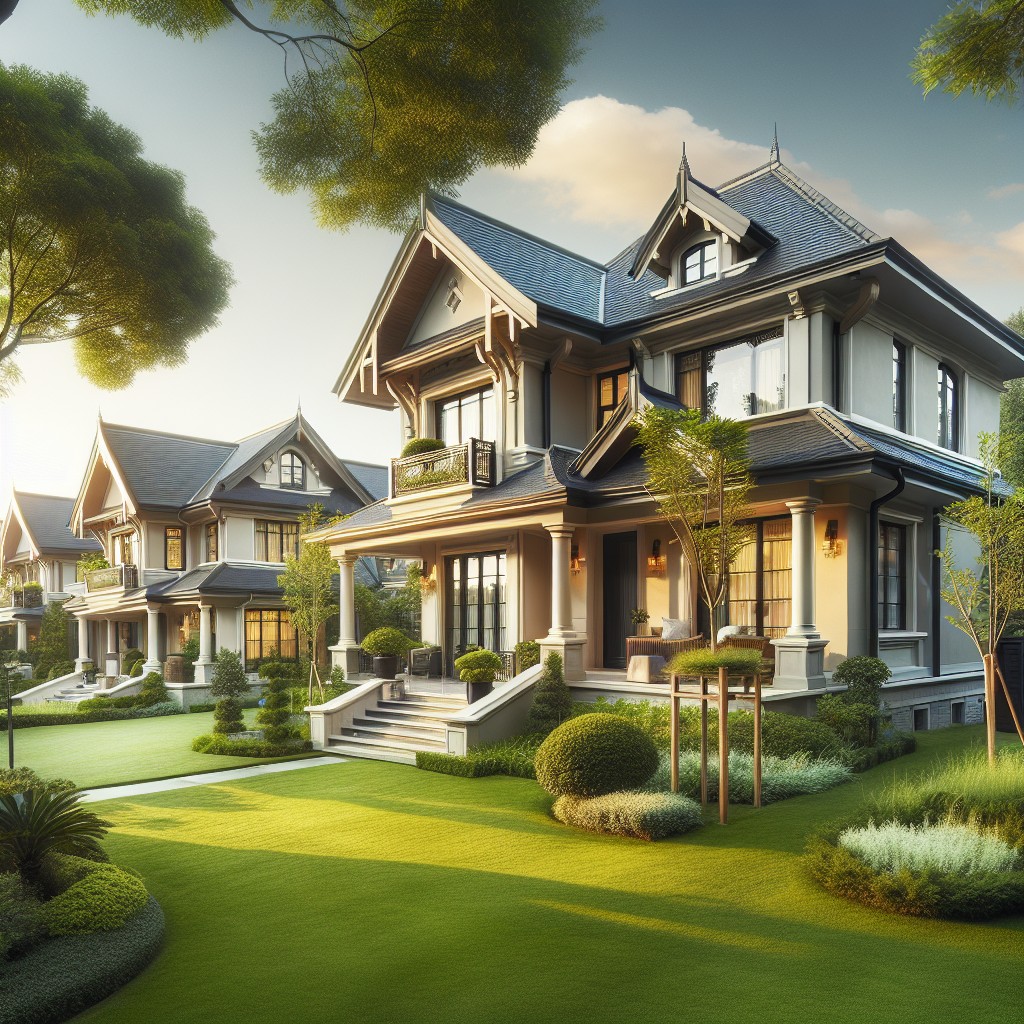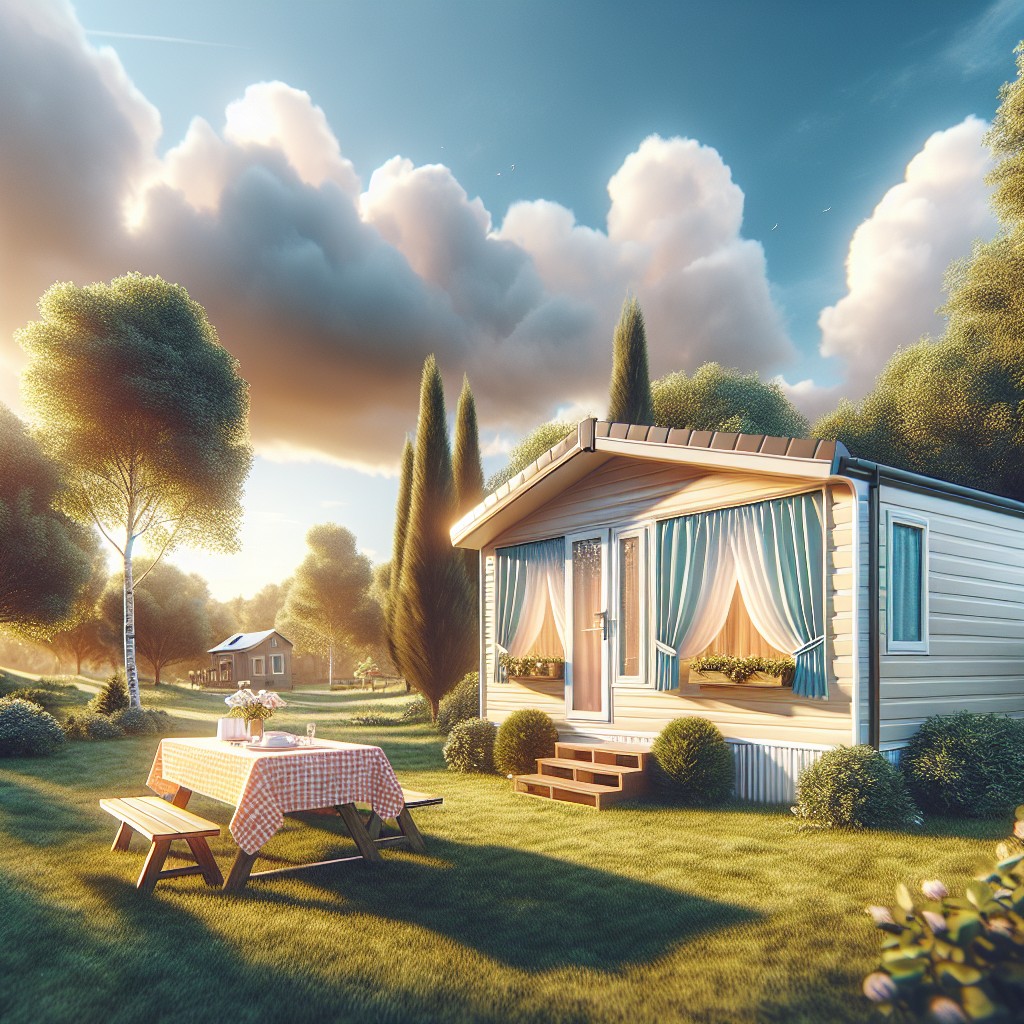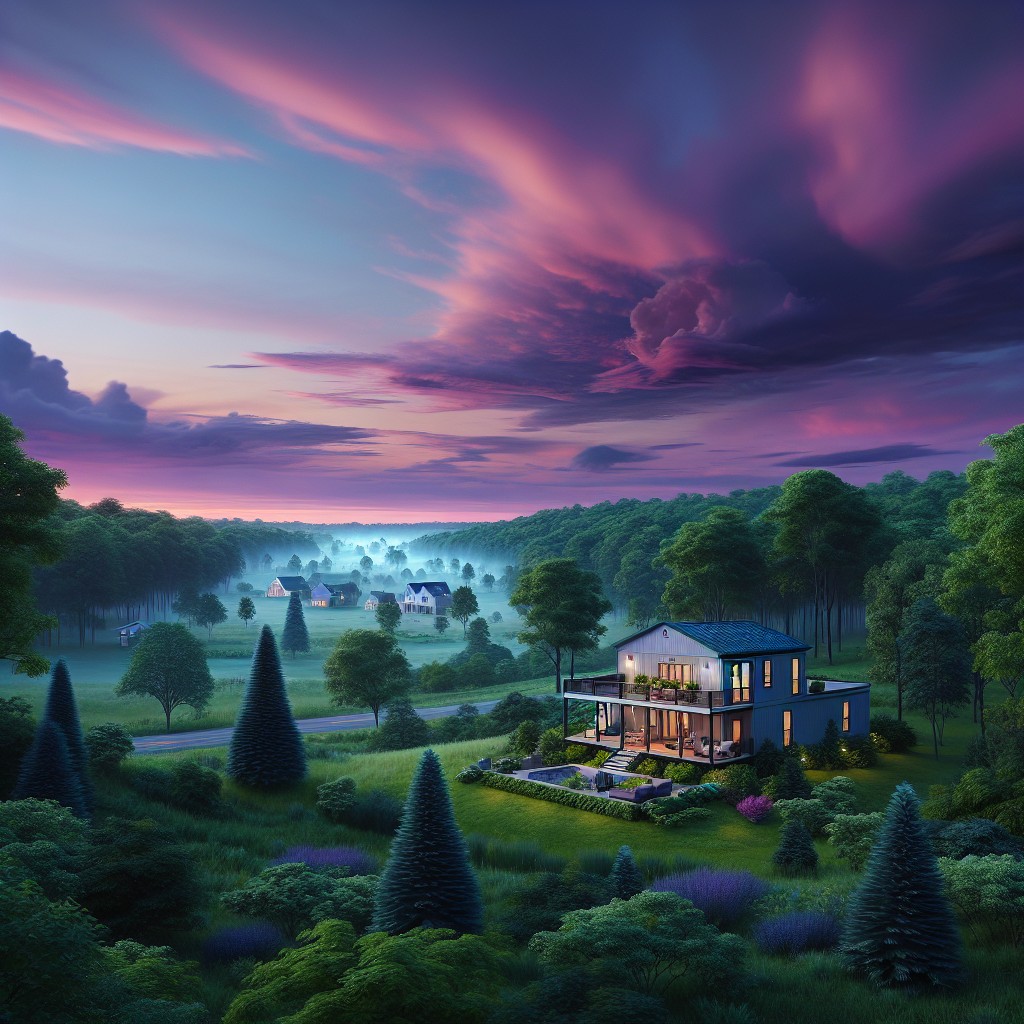Last updated on
Triple wide trailers are attracting immense attention in sustainable construction because of their eco-friendly attributes, expandable space, and customizable options.
Key takeaways:
- Triple wide trailers are wider than single or double wides.
- They are manufactured off-site and assembled on a permanent foundation.
- Triple wide trailers can offer over 2,000 square feet of living space.
- They are cost-effective alternatives to traditional homes.
- Construction is overseen by federal HUD Code guidelines.
Understanding Triple Wide Trailers: Definition and Characteristics

Triple wide trailers are a form of manufactured housing that offer expansive living spaces, similar to traditional homes. Here are some key points to grasp their essence:
- Size: As the name implies, they typically consist of three sections joined together, making them significantly wider than single or double wides.
- Foundation: Unlike traditional homes, these trailers are not built on-site but are manufactured in a facility and transported to the desired location, where they are assembled on a permanent foundation.
- Living Space: They can offer over 2,000 square feet of space, accommodating multiple bedrooms, larger living areas, and full-size amenities.
- Portability: While designed to be moved only once from factory to foundation, they retain a degree of portability.
- Regulation and Standards: Construction is overseen by federal HUD Code guidelines instead of local building codes.
- Affordability: They offer a cost-effective alternative to conventional homes, though they are typically more expensive than their smaller counterparts due to the increased size and features.
Benefits of Owning a Triple Wide Trailer
Spacious living at a reduced cost is a major draw for those considering a triple wide trailer. With the added square footage, families can enjoy the comforts of a traditional home, including separate dining areas, expansive living rooms, and additional bedrooms or office space.
The efficiency of factory-built homes also provides an eco-friendlier footprint, thanks to reduced material waste and energy usage during construction. Furthermore, these trailers often feature customization options that allow for a personalized touch without the steep price tag associated with custom site-built homes.
Not being tied to a specific location, owners can select a scenic or convenient plot of land and have their home delivered to the site – a level of flexibility that is especially attractive to those who appreciate the ability to move without leaving their beloved home behind.
Additionally, for retirees or those looking to downsize without sacrificing quality or space, a triple wide trailer offers a manageable living environment that is both luxurious and practical.
Design Considerations for Triple Wide Trailers
When planning a triple wide trailer, it’s essential to account for both aesthetic appeal and functionality. Here are some key points to consider:
- Space Allocation: Deciding how to distribute space across living areas, bedrooms, and bathrooms is crucial. Ensure the layout matches your lifestyle, with ample room where you need it most.
- Foundation Requirements: These larger structures demand a solid foundation. Check local regulations and consult professionals to ensure stability and compliance.
- Energy Efficiency: Incorporate insulation, double-pane windows, and energy-efficient appliances to reduce utility bills and environmental impact.
- Natural Light: Consider the placement of windows and skylights to maximize daylight, enhancing mood and lowering electricity use during the day.
- Storage Solutions: With more space comes the need for organized storage. Built-in cabinets and closets can keep the home clutter-free.
- Exterior Design: The trailer should complement its surroundings. Choose colors and materials that blend with the local landscape and architecture.
These considerations will guide you in creating a triple wide trailer that is both comfortable and practical.
Average Starting Price of Triple Wide Trailers
The financial investment for a triple wide trailer can vary based on several factors, including location, manufacturer, and customization options. Generally, prices start around $100,000, going upwards of $250,000 for more luxurious models. These figures are affected by the following:
- Base Model vs. Customization: The base price typically covers standard finishes and layouts. Upgrades or personalized modifications can raise costs.
- Manufacturer and Brand: Some brands might offer competitive pricing or premium models at different cost points.
- Delivery and Setup Costs: Transportation to your property and installation can add to the overall expense, influenced by distance and site accessibility.
- Additional Features: Add-ons like high-end appliances, upscale materials, or smart home systems will affect the final price tag.
Keep in mind that compared to traditional homes, these prices often include the cost of the home itself but may not cover land, foundation, or utilities setup.
Expected Build Time for Triple Wide Trailers
The construction timeline for a triple wide trailer is generally faster than that of a traditional site-built home. Factors affecting build time include manufacturer schedules, customization level, and site preparation.
Here are key points to understand the timeline:
- Pre-Construction Phase: Before assembly begins, expect several weeks for design finalization, obtaining permits, and preparing the site.
- Manufacturing Process: Once production starts, a triple wide trailer can be built in the factory within 6 to 8 weeks, thanks to the efficiency of assembly-line fabrication.
- Delivery and Assembly: Transporting the sections to your site and securing them together typically takes several days, weather permitting.
- Finishing Touches: After assembly, additional time is needed for hooking up utilities, completing interior and exterior finish work, and final inspections, which can range from a few weeks to a couple of months.
Remember, communication with your manufacturer and builder is crucial to staying updated on your specific project timeline.
Popular Triple Wide Home Types and Their Features
Triple wide trailers are diverse, each type tailored to different preferences and needs. Here’s a snapshot of some common options:
- Ranch Style: Embodying a classic look, these homes often present an open floor plan, wide hallways, and easy accessibility, a perfect fit for families appreciating space and a single-story layout.
- Contemporary Homes: With modern aesthetics, they boast sleek lines, large windows for natural light, and minimalist interiors for those with a penchant for the latest design trends.
- Traditional Homes: These trailers preserve the timeless feel of conventional houses, featuring pitched roofs, porches, and cozy living spaces, bringing a sense of classic comfort and charm.
- Luxury Models: Equipped with high-end finishes, gourmet kitchens, spa-like bathrooms, and expanded master suites, they cater to individuals seeking a touch of elegance and sophistication.
Each style is customizable, ensuring that functionality and personal style go hand-in-hand in creating a place to call home.
Customization Options for Triple Wide Trailers
Triple wide trailers offer a range of customization options that allow for a personalized touch, ensuring your modular home meets your specific needs and preferences.
- Exterior Finishes: Choose from vinyl siding, brick, stone, or wood to match your style and increase curb appeal.
- Interior Design: From wall colors to flooring materials, customize each room to create the desired ambiance.
- Floor Plans: Modify existing floor plans to add extra bedrooms, enlarge living spaces, or incorporate office areas.
- Fixtures and Fittings: Select from a variety of light fixtures, cabinetry, and countertop materials to enhance functionality and aesthetics.
- Energy Efficiency Upgrades: Opt for energy-efficient appliances, solar panels, and enhanced insulation to reduce environmental impact and save on utility bills.
- Technology Integration: Smart home systems can be incorporated for added convenience, including security systems, automated lighting, and climate control.
- Accessibility Features: Add ramps, wider doorways, or grab bars to accommodate mobility needs and ensure comfort for all family members.
By exploring these options, you can shape your triple wide trailer into a unique home that caters to your lifestyle while also potentially increasing its long-term value.
Locating Modular Home Builders and Dealers
To begin your search for a reputable modular home builder or dealer, start locally. Check online directories and customer reviews to create a list of potential candidates. Visiting model homes or trade shows can give you a tangible sense of a company’s craftsmanship and design capabilities.
Consider reaching out to homeowners associations and real estate agents specializing in modular homes for recommendations. They often have insights into the local market and can suggest builders known for quality and reliability.
Ensure the builders or dealers are licensed and insured, which is crucial for your protection and peace of mind. It’s also wise to look into their after-sales service and warranty offerings, as these can significantly impact your long-term satisfaction with the investment.
Moreover, engage with each company to gauge their responsiveness and willingness to answer your questions. The way a builder or dealer communicates with you during the initial phase is often indicative of the overall customer service experience you can expect.
Remember, take your time to compare each candidate, focusing on their experience with triple wide trailers and the ability to cater to your specific needs and preferences.
Selecting the Right Triple Wide Floor Plan
Choosing a floor plan that aligns with your lifestyle and needs is crucial. Here are some key considerations:
- Prioritize functionality: Analyze your daily routine and determine which spaces you use the most. If you entertain often, an open concept kitchen and living area could be beneficial. Alternatively, if you work from home, ensure there’s a designated office space.
- Think about the future: If you’re planning to grow your family or expecting to host extended stays for guests, opt for additional bedrooms or a flexible space that can serve as a guest room when needed.
- Evaluate storage options: More space means more possessions. Ensure your plan includes ample storage solutions like walk-in closets, pantries, and additional shelving.
- Assess the flow of movement: Imagine walking through your home. Hallways should be wide, and rooms should be easily accessible, promoting a comfortable and logical movement pattern.
- Consider light and ventilation: Select a plan with plenty of windows in living areas for natural light. Proper ventilation is also essential, especially in kitchens and bathrooms, to maintain air quality.
- Pay attention to the exterior design: The floor plan should seamlessly integrate with the exterior layout, taking into account the placement of decks, porches, and garages for easy access and aesthetic coherence.
Evaluating the Value Proposition of Triple Wide Mobile Homes Per Square Foot
Assessing the value proposition of triple wide mobile homes involves looking beyond the sticker price to understand the cost and benefits per square foot. Here are key points to consider:
- Space Efficiency: With more square footage, triple wides often offer a lower cost per square foot compared to single or double wides, giving you more space for your investment.
- Resale Value: While traditionally less than site-built homes, well-maintained triple wides in desirable locations may offer a decent return on investment.
- Upfront Costs vs. Long-Term Savings: Higher initial costs may be offset by long-term savings in maintenance, energy use, and upgrades, due to the modern construction techniques used in these homes.
- Inclusions in Price: Understanding what’s included in the price per square foot, such as standard features or additional amenities, can affect the overall value.
- Comparison with Other Housing Options: Compare costs with other types of homes in the same area to determine competitiveness and appeal in the local real estate market.
By analyzing these factors, you can make an informed decision about the cost-effectiveness and potential benefits of a triple wide mobile home.
FAQ
How much are most triple wides?
The cost of most triple-wide homes typically falls within the range of $200,000 to $250,000.
What is the biggest size mobile home?
The largest size of a mobile home can reach up to 3,600 square feet, typically found in triple-section mobile homes.
How many square feet is a triple wide trailer?
A triple wide trailer typically spans between 2,000 to 3,000 square feet.
Can you have a triple wide in NC?
Yes, you can have a triple wide home in North Carolina.
What permits are needed to install a triple wide trailer in North Carolina?
In North Carolina, installation of a triple-wide trailer requires a building permit, electrical permit, plumbing permit, and a HVAC permit.
What are some energy-efficient features to consider when purchasing a triple wide mobile home?
When purchasing a triple wide mobile home, consider energy-efficient features such as high-quality insulation, energy star appliances, LED lighting, solar power systems, and double-pane windows.
How does the cost of a triple wide mobile home compare to traditional brick-and-mortar houses?
Triple wide mobile homes typically cost less than traditional brick-and-mortar houses due to lesser materials needed and faster construction times.
Related reading:
Table of Contents





